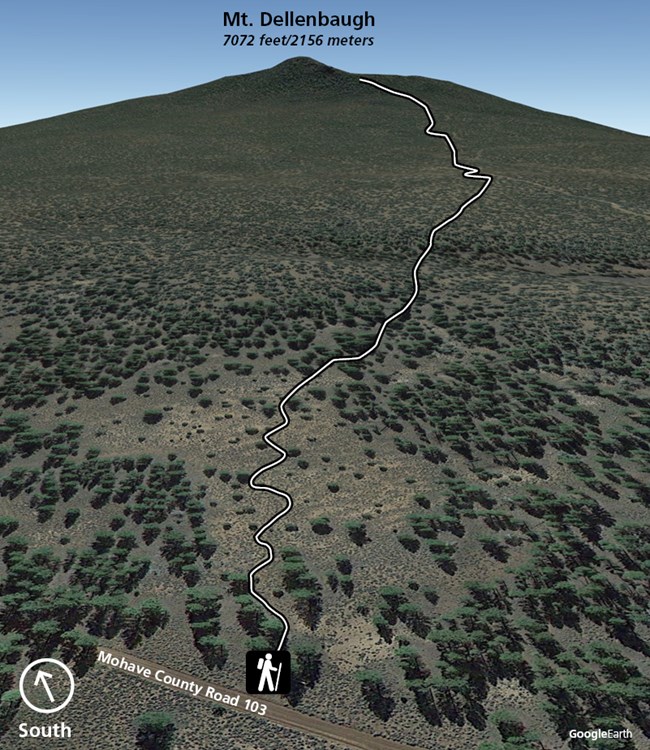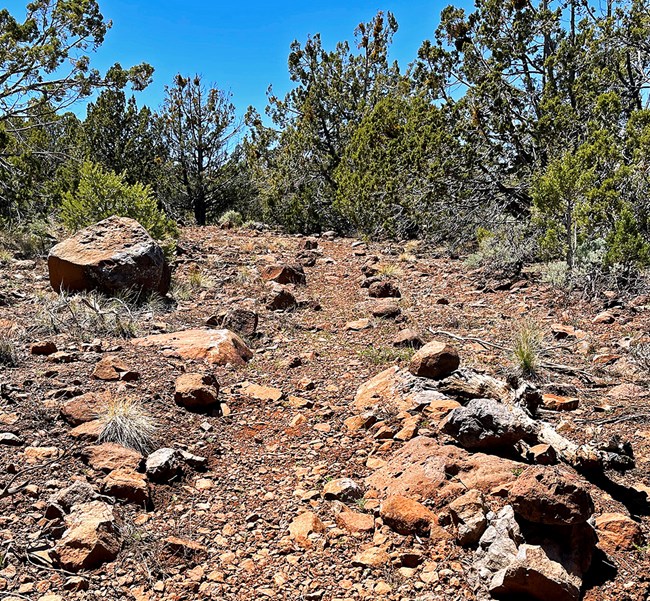
J. Axel - NPS
The Mt. Dellenbaugh summit trail offers one of the most scenic views from its summit into the western Grand Canyon and Arizona Strip. This trail is best attempted in the spring and fall when temperatures are most comfortable. There is no shade on the trail for summer hikers when temperatures can be in the low 90s. The area is usually not accessible from December through March due to snow, ice, and mud on the road. Snow is melted off usually by April. When wet the trail is impassible due to slippery clay. Mt. Dellenbaugh is part of the history of the Grand Canyon and its first exploration by John Wesley Powell in 1869. Powell named this peak for Frederick Dellenbaugh, an artist who joined Powell's second expedition in 1870-71. However, it is most known for being the mountain that William Dunn and the Howland brothers climbed after deserting Powell's first expedition. After the three had climbed out of the Grand Canyon they needed a vantage point to get their bearings and find their way to St. George. Thinking they were headed toward safety, instead they met with foul play shortly after descending the slopes of Mt. Dellenbaugh. Perhaps they were mistaken for federal spies, or thought to be a trio of miners who had recently killed a woman at a nearby mine. Stories from the time period point to several possible culprits, but ultimately their murders were never solved. 
Time: 3-4 hours round trip for most hikers Elevation Gain: 883ft/270m Trailhead: 6,189 feet/1886 meters Summit: 7,072 feet/2156 meters To reach the trailhead starting from St. George:

J. Axel - NPS Take all the food and water you need on this hike. To learn more about the volcanic story of Parashant, including the 6.8 million year old Mt. Dellenbaugh volcano, see our Geology and Volcanism pages. |
Last updated: January 14, 2022
